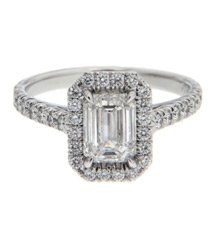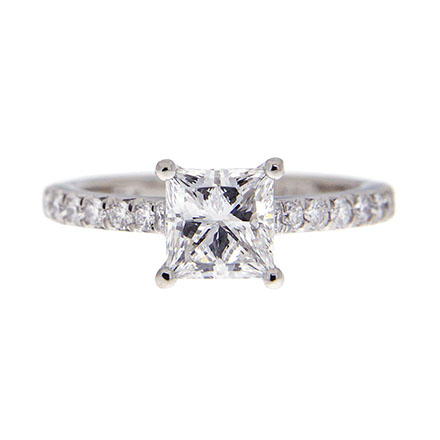Princess cut diamonds have several origin stories. What is certain is the cut debuted in the late 20th century. It was developed to brighten jewels while preserving as much weight as possible. The square diamond is second in popularity only to the round brilliant.
Princess cuts are mixed cut stones. They combine the step cut diamonds’ carat retention with brilliant cuts’ glitter. Princess cuts have a square table, or topmost facet, which takes up most of the face. Below is a deep bottom half, known as the pavilion. The pavilion’s facet patterns vary, with two or more chevron rows.
The larger the diamond, the rarer. By sacrificing less of the original stone, princess cuts can be larger than other shapes with the same rough carat. Their square shape also sets them apart from the perennial favorite, the round brilliant. The frugal minded or those who want a less conventional cut may turn to princess cut diamond rings.
When choosing your princess cut diamond, it may help to keep some guidelines in mind. The sides should be parallel to one another, with defined right-angle corners. The cut should have a balance of white and prismatic light as well as shadows.
Princess cut diamond rings come in an array of designs. No matter the style you choose, the jewels should be set to protect them from harm. Though diamonds are hard, thin spots like edges and corners are vulnerable to bumps and other impacts. Bezel, half bezel and V-shaped prongs are a few settings which safeguard princess cuts while displaying their charms.






